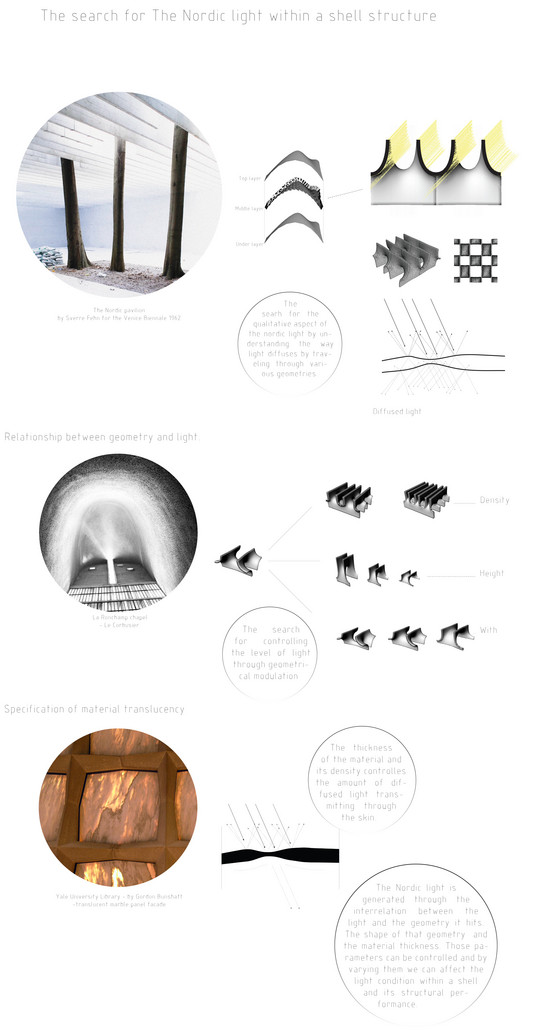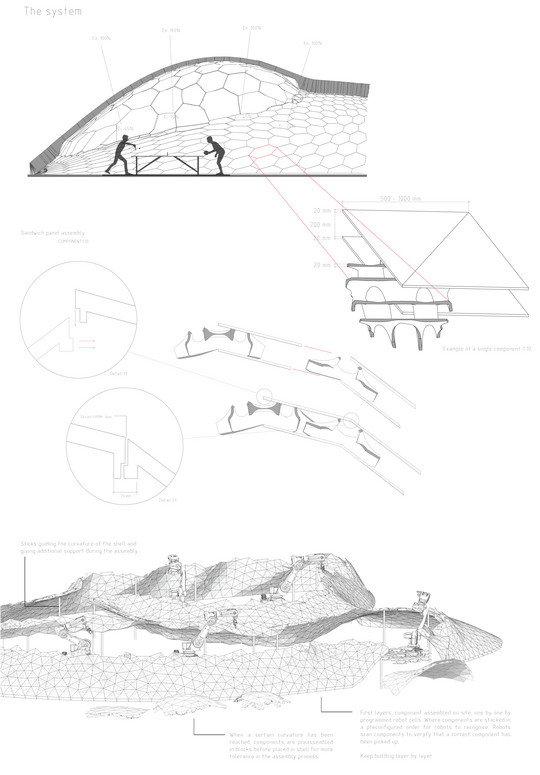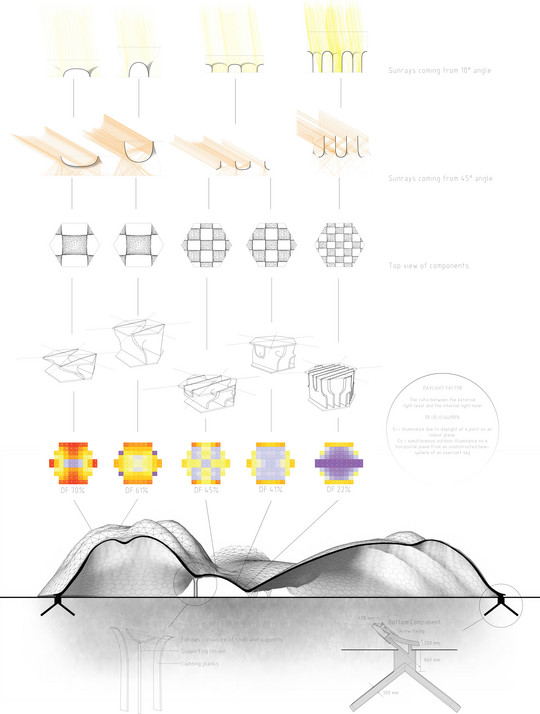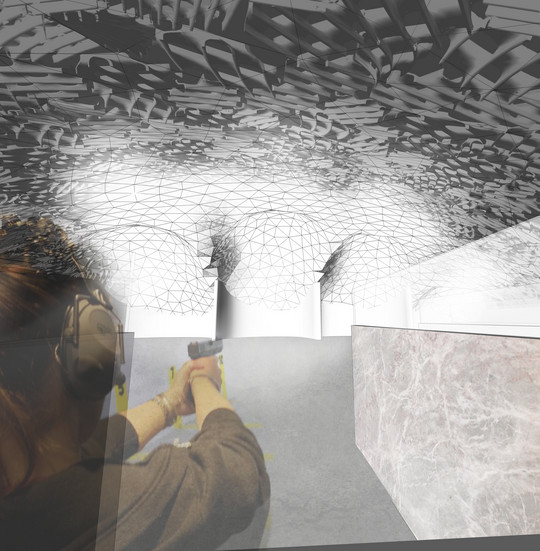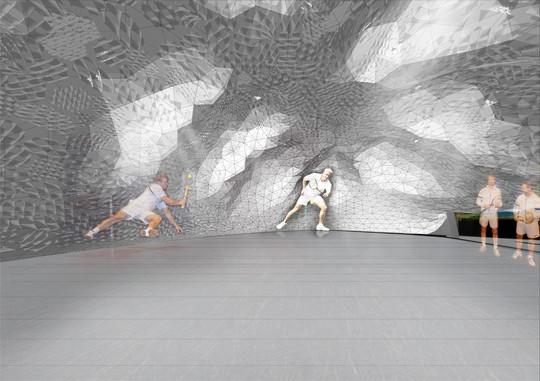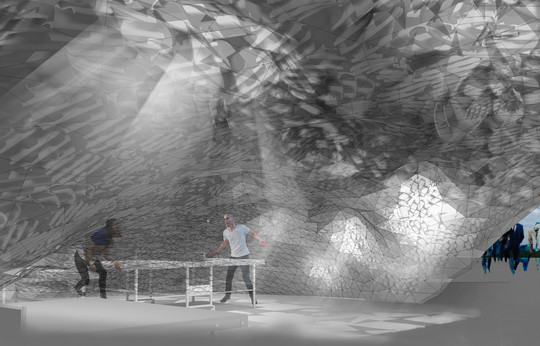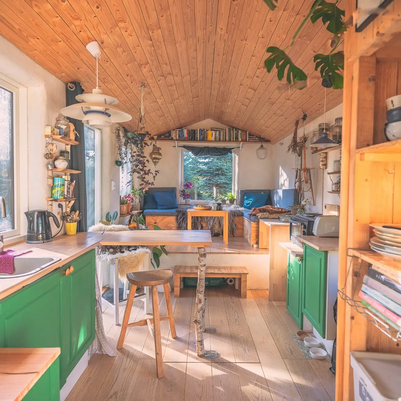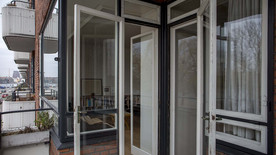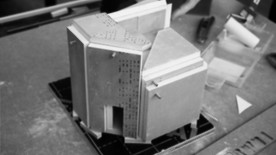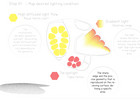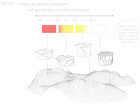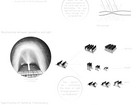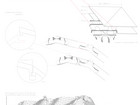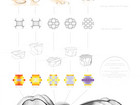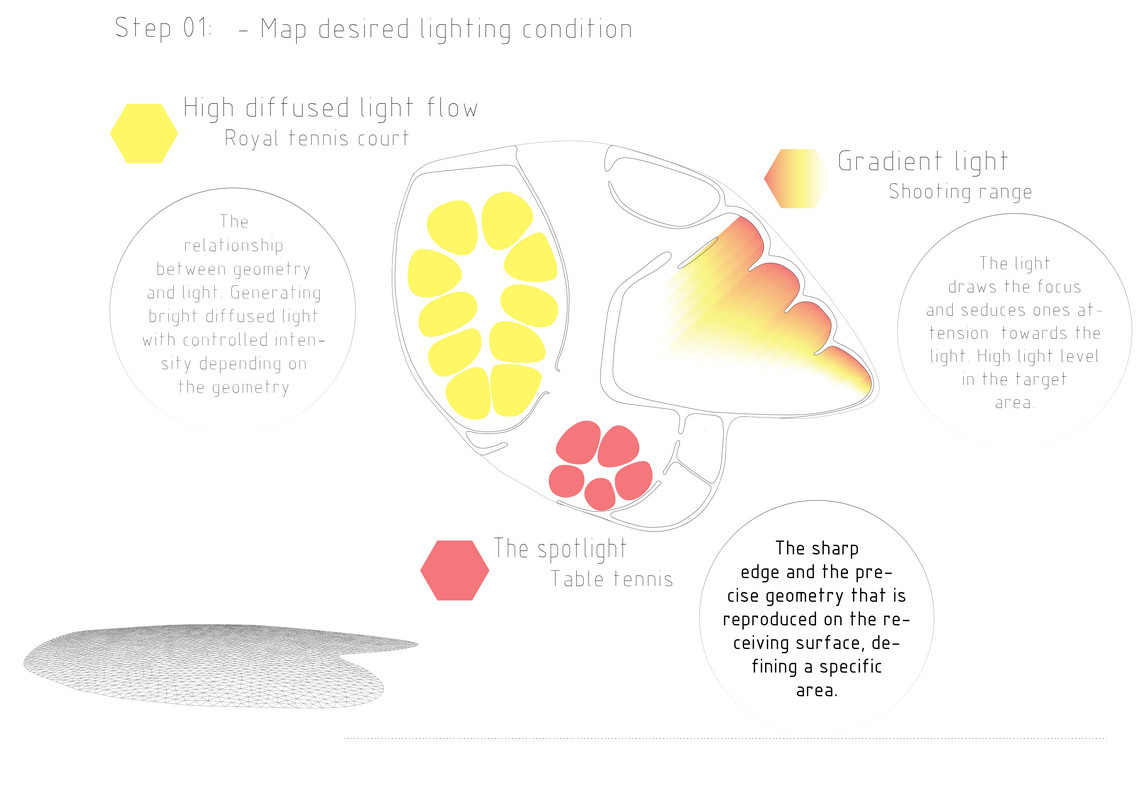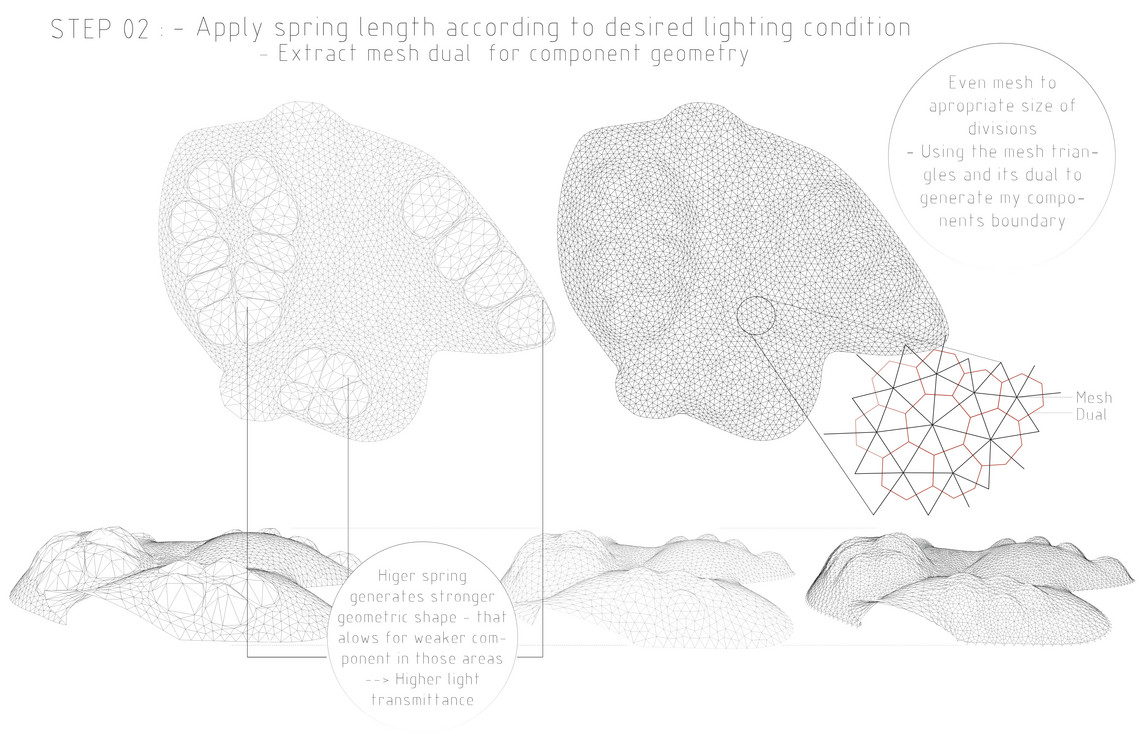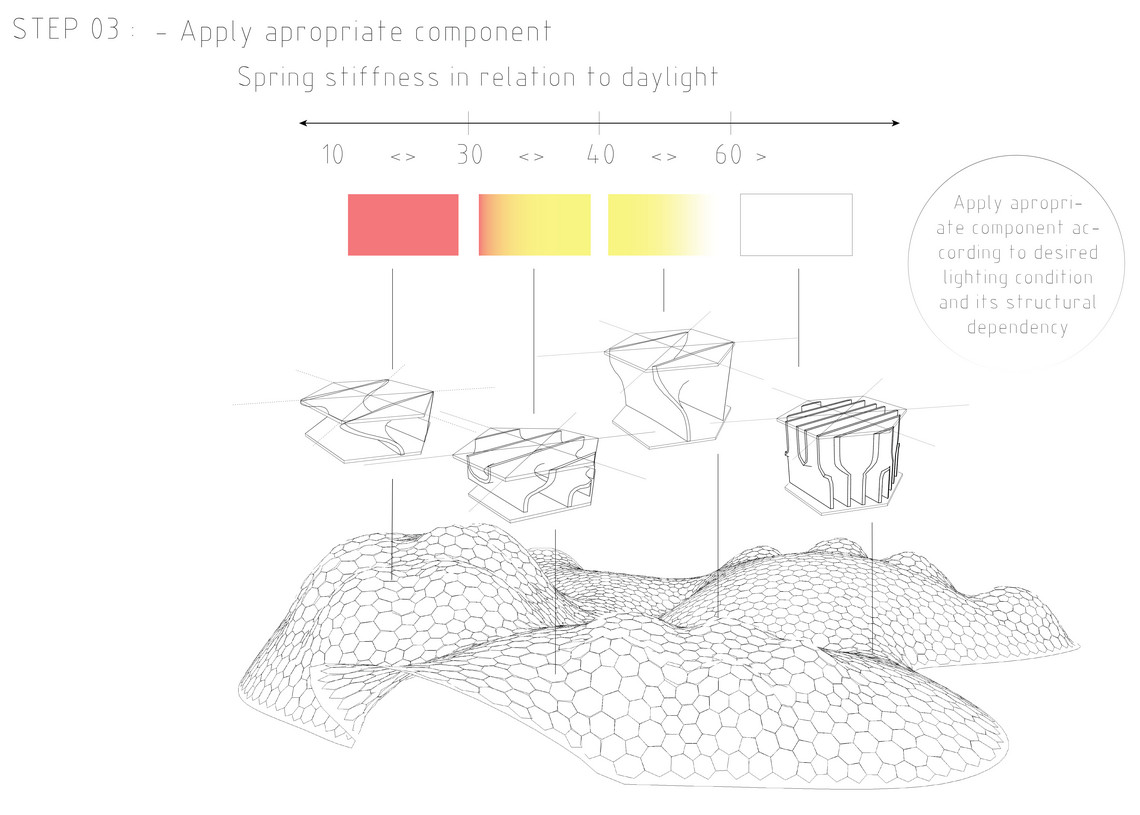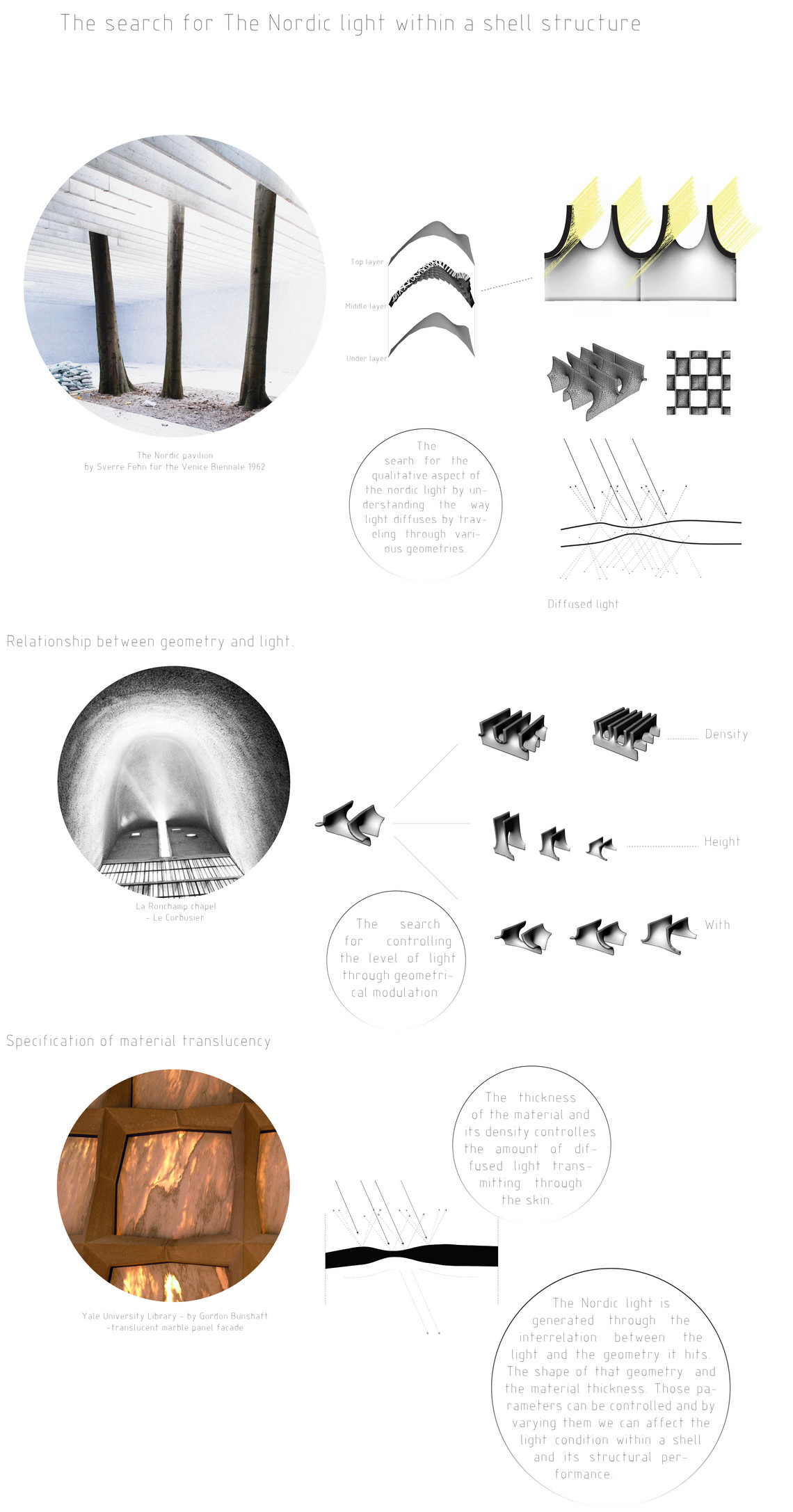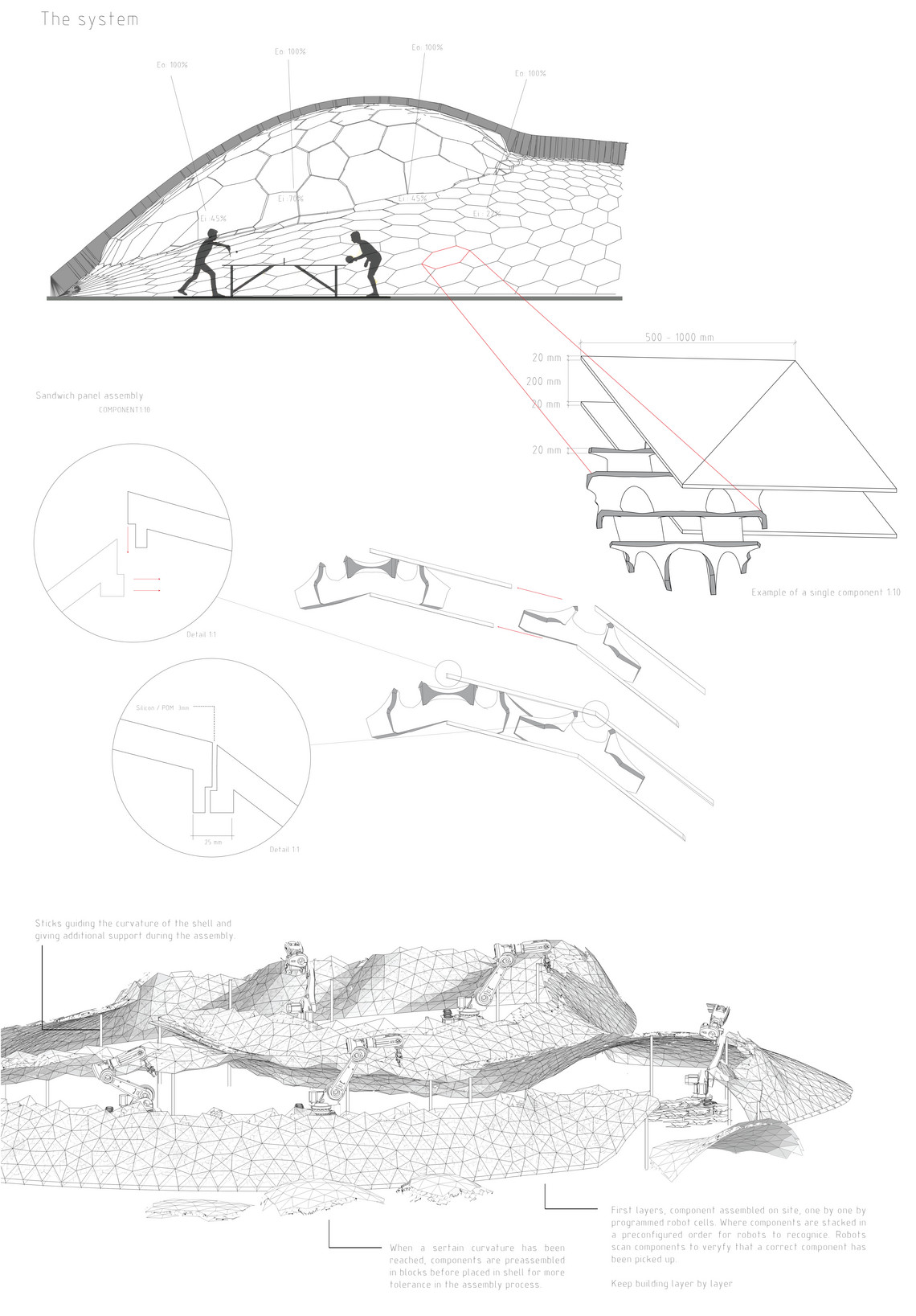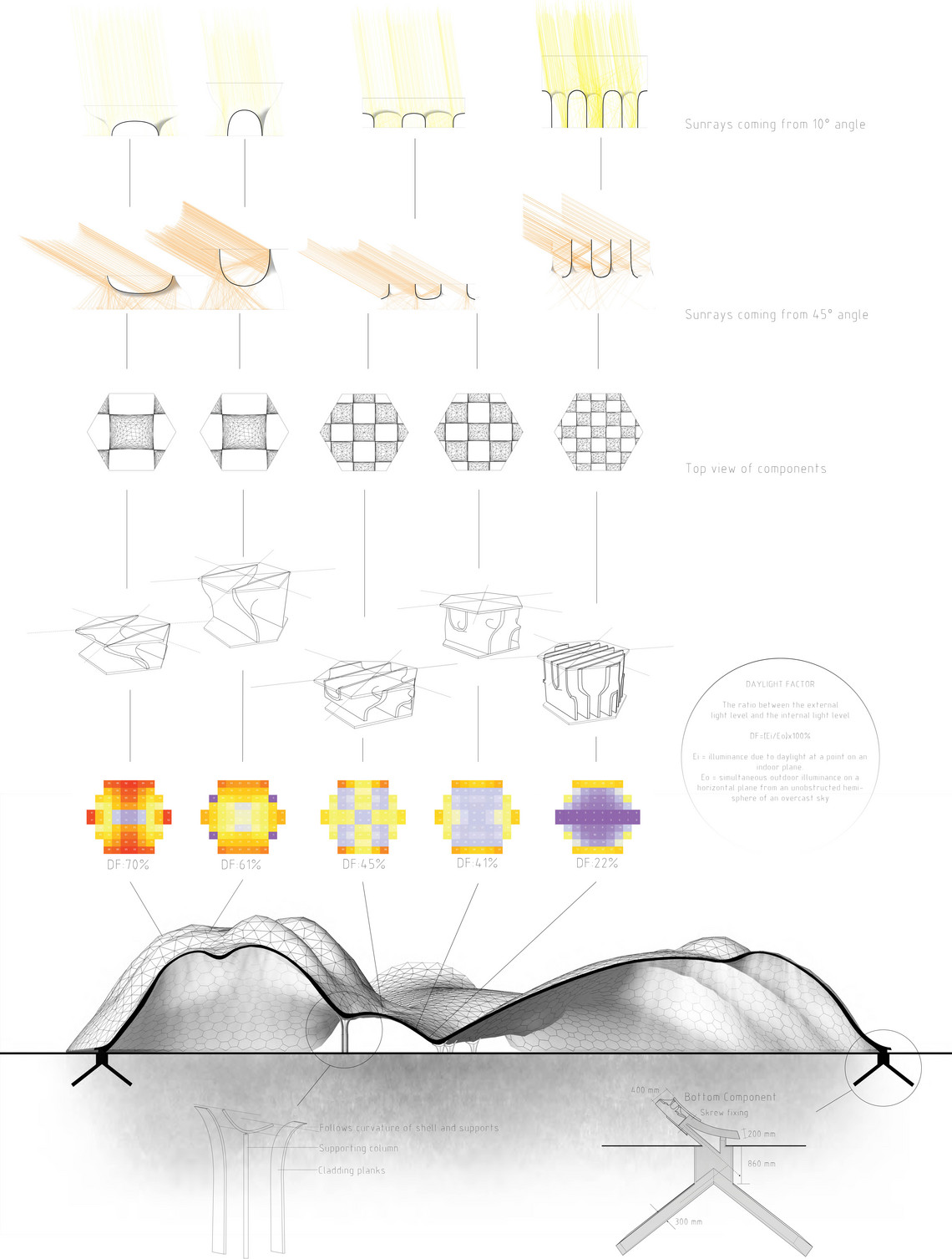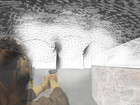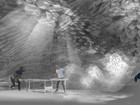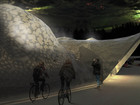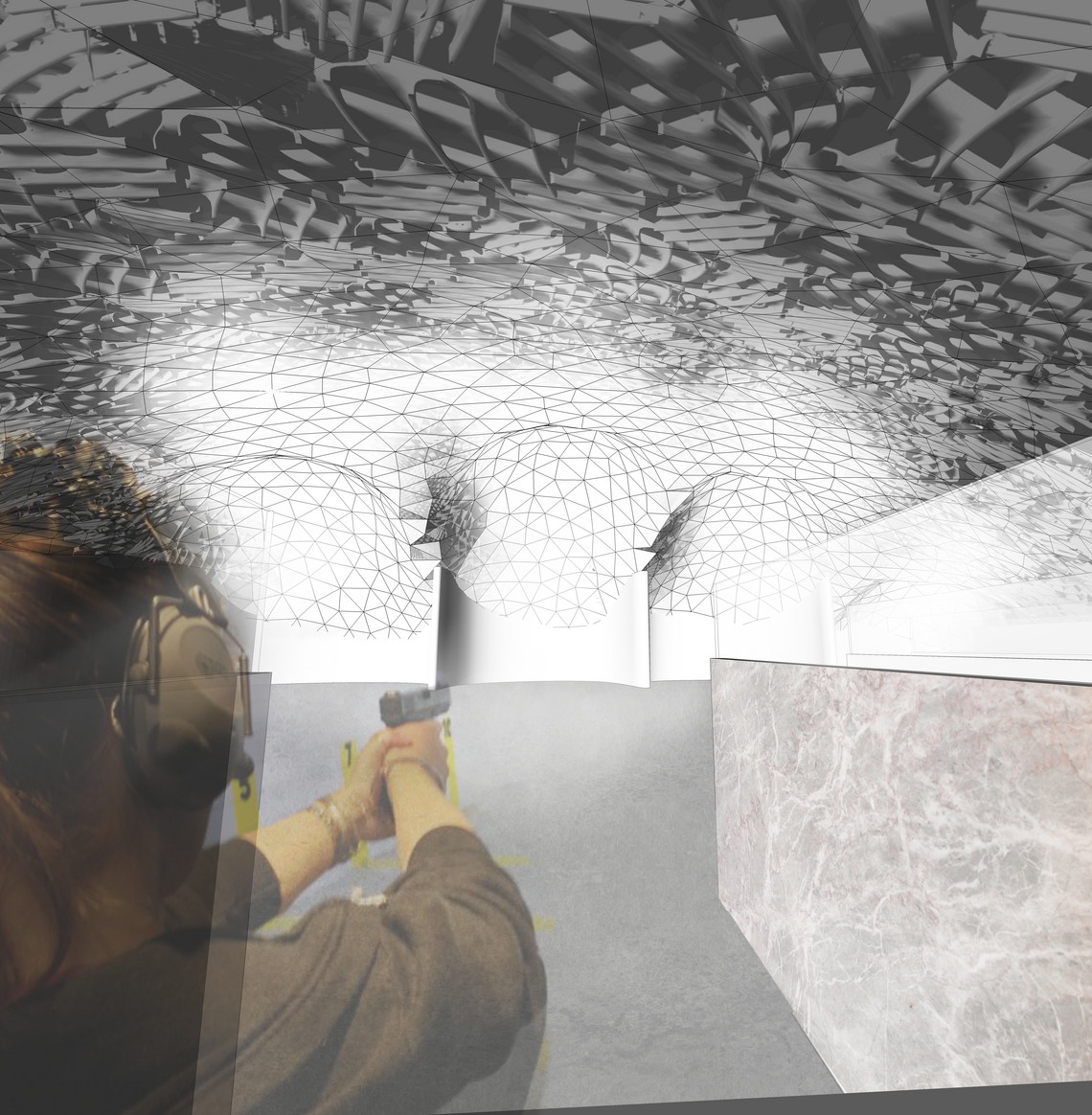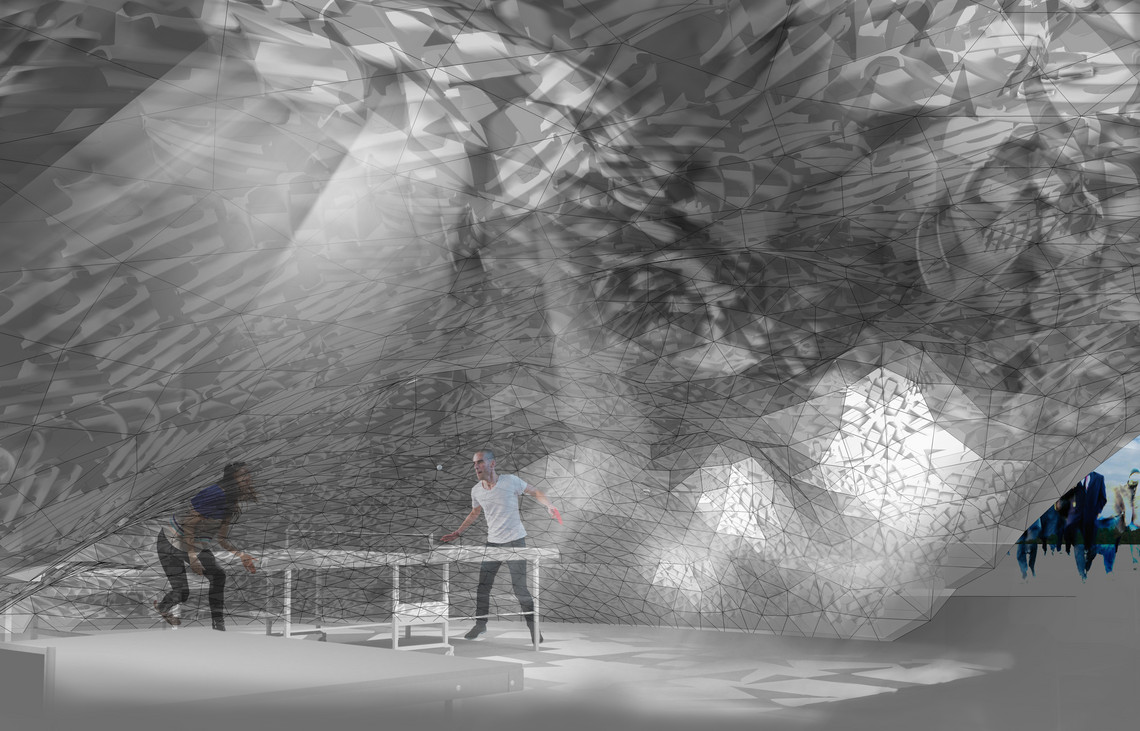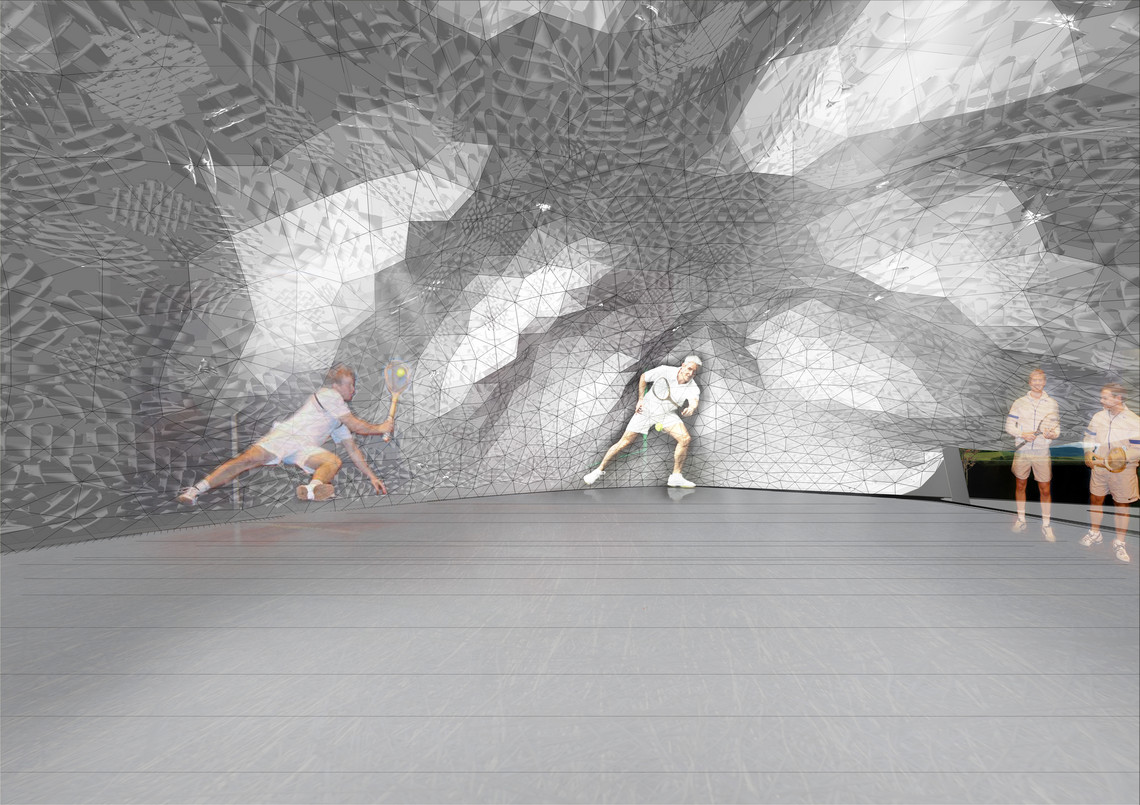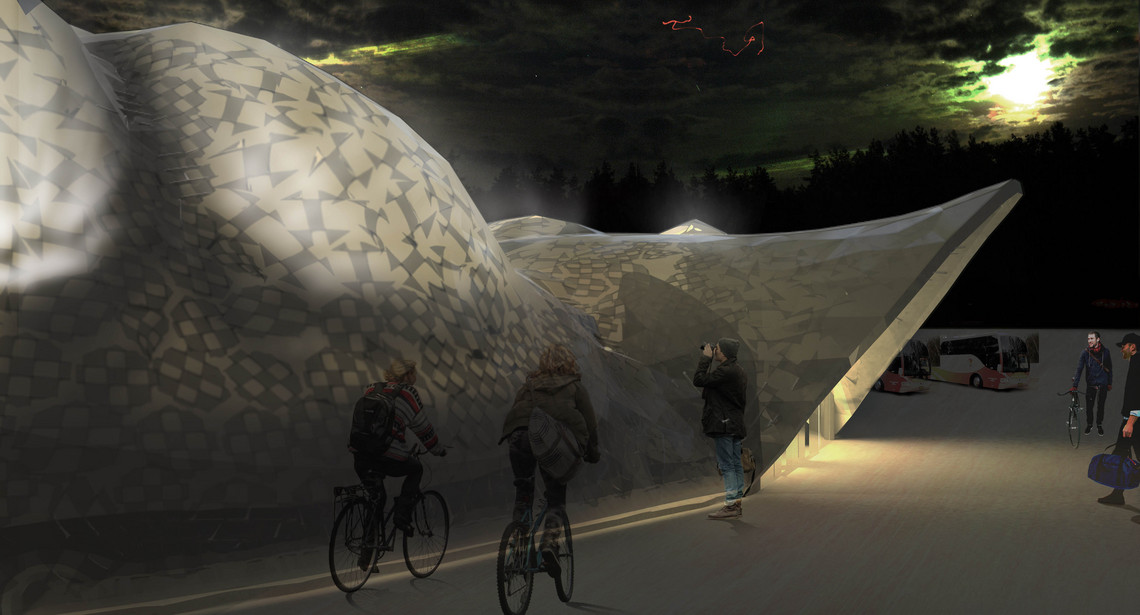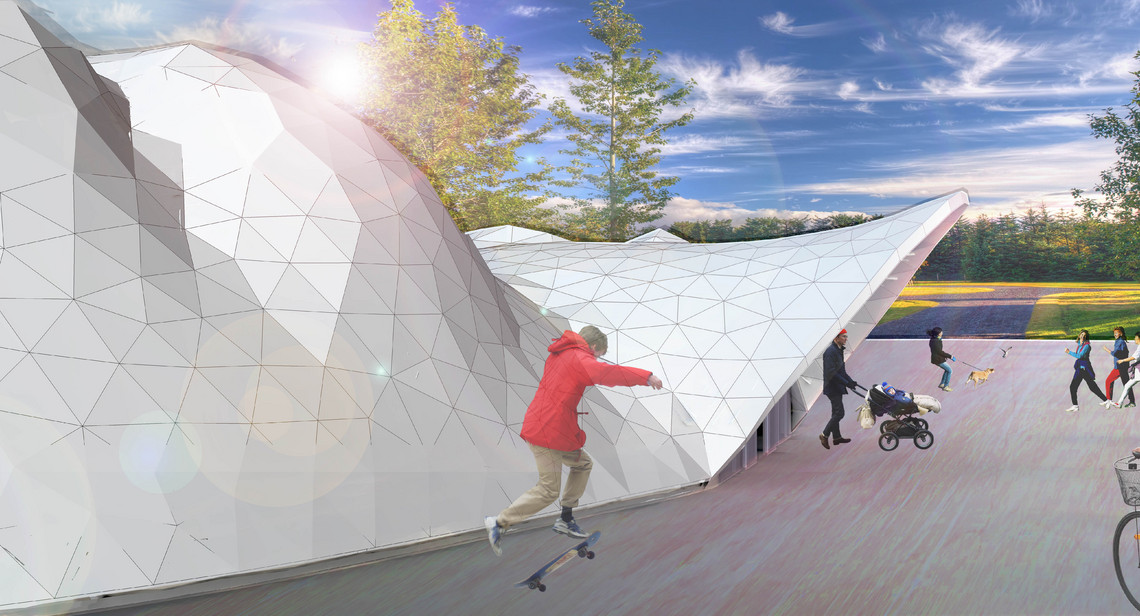
Beyond structure: (in)formed finding of new shell morphologies
Many things are important to designers besides structure. The current set of tools we have for shell design focuses on finding optimal structural forms unrelated to the light, spatial or aesthetic qualities of the shell. With this project I introduce these other design performances to those tools and through my research look at their relationship and interdependency. I investigate the introduction of light in shell design and how to control and modulate it through physical patterns using computational techniques. More specifically the project explores meshing strategies for developing a 3D printed component system for shell structure, based on integration of lighting condition and structural performance.
For me light is beyond structure.
I have developed a design approach that links the consideration of light with the consideration of shell structure. There are attempts of this for example in Frei Otto‘s Stuttgart train station, where the structural form funnels light into the space. This is limited to one repeated quality of light. I have extended this by integrating modulation of particular qualities of Nordic light, which is the diffused transmissive light and the spotlight.
b) we have the right to use it c) we
are allowed to mention our opinion d) and
we can find and express it in our projects.
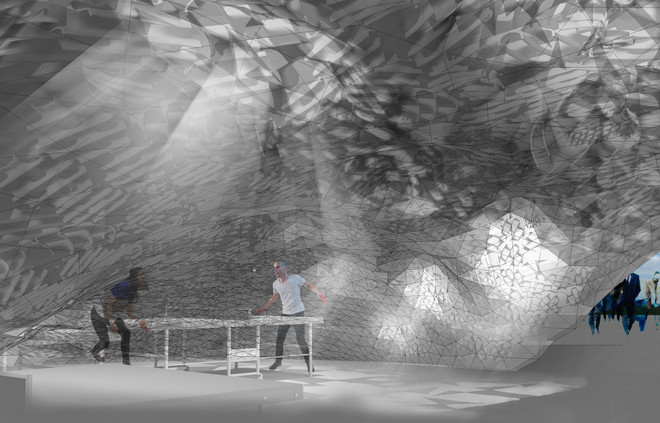
Full project portfolio - Beyond Structure

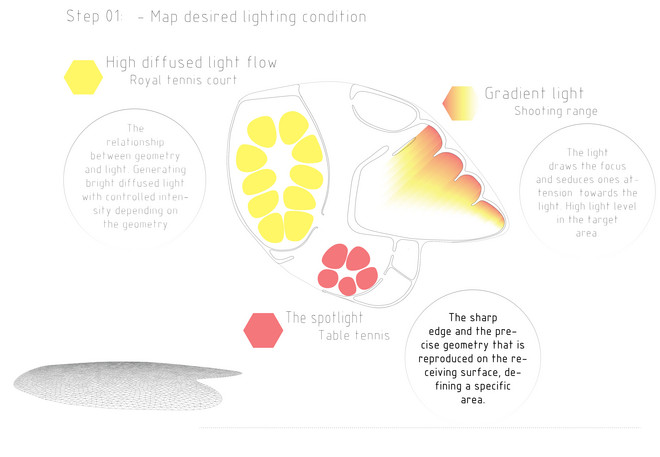
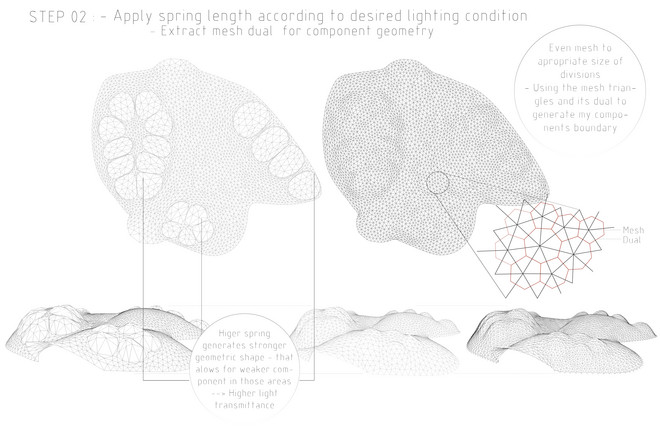
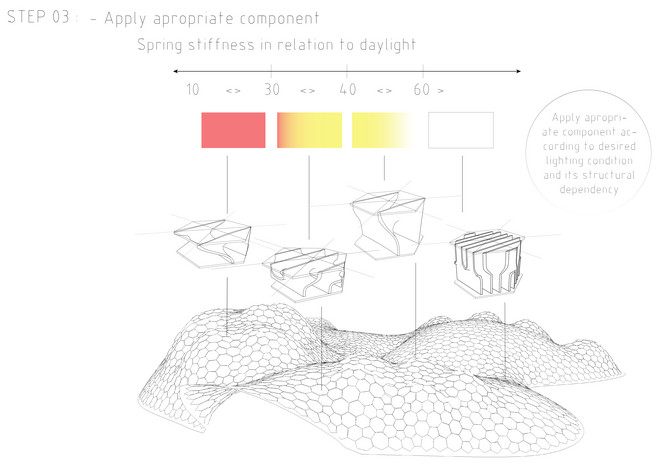
How to use the system of the integration of light and structure as a designer with a sports design senario. Whereas shells are traditionally involved with sports programs and these selected sport senarios all require a very specific light quality.
Step 01: Map desired lighting conditions according to program requirements. Here we are working with three programs that all require very specific lighting condition. That is the bright diffused light flow for the Royal Tennis, the gradient light for the shooting range and the spotlight for the table tennis.
Step 02: Apply spring length according to desired lighting condition. Where more light is desired, the springs have less stiffness and therefore it generates higher curvature, that is a stronger geometric shape.
Then the mesh springs are evened with a meshmashine after the form-finding process.
Using the even mesh triangles we can find their dual. The triangles generate the component face and the dual generates the boundary internal geometry.
Step 03: Finally we apply the appropriate component according to the desired lighting condition and its structural dependency.
